Ramshorn Snail
- April 1, 2024
- 0 comment
The Ramshorn Snail, a fascinating inhabitant of freshwater environments, is a unique gastropod mollusk distinguished by its spiral-shaped shell reminiscent of a ram’s horn. These snails, belonging to the Planorbidae family, are commonly found in ponds, lakes, and slow-moving streams worldwide. Their shells come in various colors, ranging from translucent to solid hues like red, brown, and black, adding to their visual appeal. Ramshorn snails play a crucial role in aquatic ecosystems by consuming algae, decaying plant matter, and leftover fish food, contributing to water cleanliness. They are prolific breeders, with females capable of laying numerous eggs at a time.
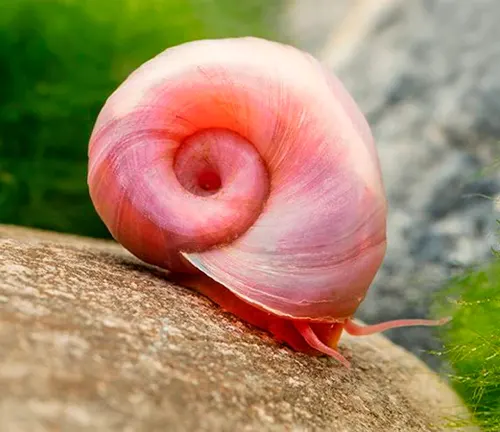
While their rapid reproduction rate can lead to overpopulation concerns in aquariums, they are generally peaceful creatures and can coexist with most freshwater fish species. Proper care, including stable water conditions and a balanced diet, is essential for their well-being in captivity. Despite their benefits, releasing ramshorn snails into natural water bodies can pose environmental risks, emphasizing the importance of responsible aquarium management. Overall, ramshorn snails are captivating creatures that add diversity and vitality to freshwater ecosystems.
| Specifications | Description |
|---|---|
| Scientific Name | Planorbidae |
| Common Name | Ramshorn Snail |
| Habitat | Freshwater ponds, lakes, slow-moving streams |
| Shell Shape | Spiral, resembling a ram’s horn |
| Shell Color | Translucent, red, brown, black, blue, pink |
| Diet | Algae, decaying plant matter, leftover fish food |
| Reproduction | Hermaphroditic, prolific breeders |
| Compatibility | Peaceful, can coexist with most freshwater fish |
| Tank Conditions | Stable water parameters, adequate filtration |
| Health Concerns | Overpopulation, nutritional deficiencies |
| Environmental Impact | Risk if released into natural water bodies |
A Fascinating Aquatic Creature
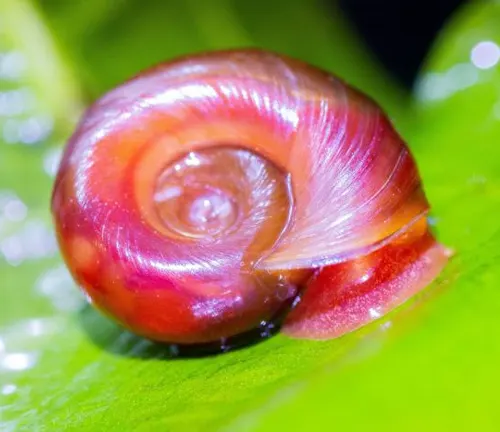
Ramshorn snails are intriguing aquatic creatures that often find their way into aquariums, offering both benefits and challenges to aquarium enthusiasts. Their unique appearance and behavior make them a subject of interest for many hobbyists. In this article, we delve into the world of ramshorn snails, exploring their characteristics, habitat, feeding habits, lifecycle, benefits, drawbacks, and tips for keeping them in aquariums.
Ramshorn snails (Planorbidae) belong to the family of freshwater pulmonate gastropod mollusks. They are named for their distinctive shell shape, which resembles a ram’s horn. These snails are commonly found in freshwater bodies worldwide, including ponds, rivers, and lakes.
Ramshorn Snail Characteristics
Shell Structure
Ramshorn Snails have a unique shell structure that is spiral-shaped, resembling a coiled horn, hence their name. The shell starts with a small, rounded apex and gradually widens as it spirals outward. The shell surface may appear smooth or slightly ridged, depending on the individual snail and its growth conditions. The size of the shell can vary among different species and individuals, with some snails having relatively small shells while others may exhibit larger, more elongated shells. Overall, the spiral shape of the shell provides protection for the snail’s soft body and serves as a distinctive feature of this species.
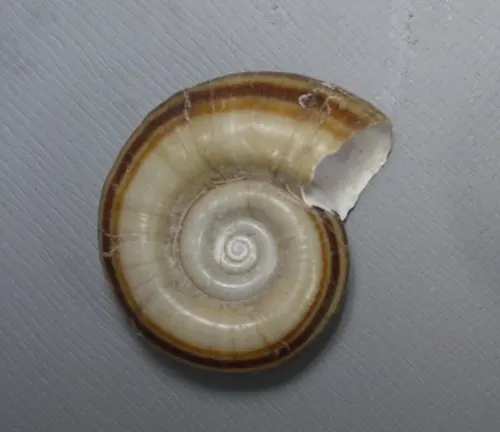
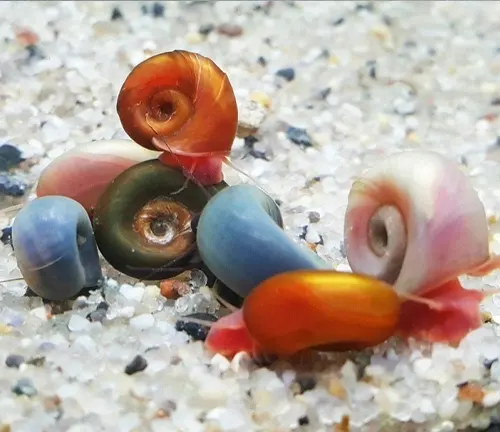
Color Variations
Ramshorn Snails exhibit a wide range of color variations, adding to their visual appeal in aquariums. The shell color can vary from translucent to opaque, with shades of red, brown, black, blue, and pink being commonly observed. The exact coloration of the shell may depend on factors such as genetics, diet, water parameters, and environmental conditions. Some snails may have solid-colored shells, while others may display patterns or markings, enhancing their overall appearance. Additionally, the intensity of the coloration may vary among individuals within the same population. Overall, the diverse color variations of Ramshorn Snails make them a popular choice for aquarium enthusiasts looking to add visual interest to their tanks.
Habitat and Distribution
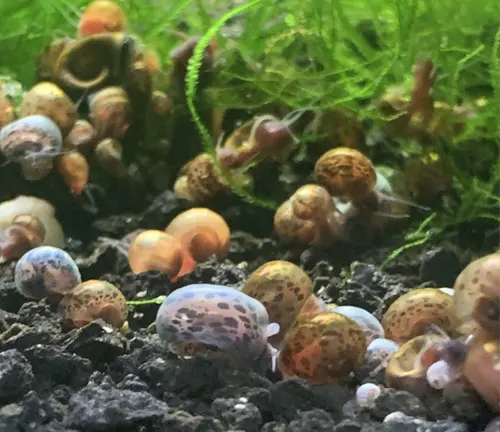

Ramshorn Snails are primarily found in freshwater habitats, inhabiting a wide range of environments around the world. They are commonly found in ponds, lakes, marshes, rivers, and slow-moving streams with calm, still waters. These snails prefer habitats with abundant vegetation, as it provides them with shelter and a source of food. Ramshorn Snails are adaptable creatures and can thrive in various water conditions, including both natural and artificial aquatic environments.
In terms of distribution, Ramshorn Snails are widespread and can be found on every continent except Antarctica. They are native to regions across Europe, North America, Asia, Africa, and Australia. Due to their ability to tolerate diverse habitats and their propensity for hitchhiking on plants or in the water of aquariums, Ramshorn Snails have been introduced to many new locations outside of their native range. As a result, they can now be found in freshwater bodies and aquariums worldwide. Despite their widespread distribution, Ramshorn Snails are most commonly encountered in areas with abundant vegetation and suitable water conditions for their survival.
Feeding Habits
Ramshorn snails are omnivorous scavengers, feeding on a diet of algae, decaying plant matter, and leftover fish food. They play a crucial role in aquarium ecosystems by helping to clean up organic debris and algae growth.
Algae Consumption
Ramshorn Snails play a vital role in aquarium ecosystems by consuming algae growth. They are known for their voracious appetite for various types of algae, including green algae, diatoms, and cyanobacteria. By grazing on algae-covered surfaces such as glass, rocks, and plant leaves, Ramshorn Snails help keep aquariums clean and free of unsightly algae blooms. Their continuous feeding behavior helps to control algae growth and maintain a balanced ecosystem within the aquarium. Additionally, Ramshorn Snails can reach areas that are difficult for other algae-eating organisms to access, making them effective cleaners in both small and large aquarium setups.

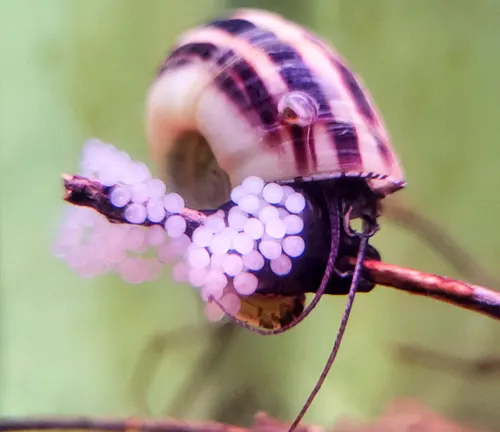
Organic Debris Consumption
In addition to algae, Ramshorn Snails also consume organic debris and decaying plant matter present in the aquarium. They are efficient scavengers, feeding on leftover fish food, dead plant leaves, and other organic material that accumulates on the substrate and surfaces within the tank. By consuming organic debris, Ramshorn Snails help prevent the buildup of waste and detritus, which can contribute to poor water quality and the growth of harmful bacteria. Their role as detritivores contributes to the overall cleanliness and health of the aquarium environment, promoting the well-being of other aquatic inhabitants. Therefore, Ramshorn Snails are valued not only for their algae-eating abilities but also for their role in maintaining a clean and balanced ecosystem by consuming organic debris.
Lifecycle and Reproduction
Ramshorn snails are hermaphroditic, meaning they possess both male and female reproductive organs. They reproduce prolifically, with females capable of laying hundreds of eggs at a time.
Breeding Behavior
Ramshorn Snails are hermaphroditic, meaning they possess both male and female reproductive organs. When it comes to breeding, they can act as both males and females during mating encounters. During the breeding season or under favorable conditions, Ramshorn Snails engage in a ritualized courtship dance. This dance involves intertwining and circling each other, often accompanied by the secretion of mucus trails. After the courtship ritual, fertilization occurs, and the snails proceed to lay eggs.
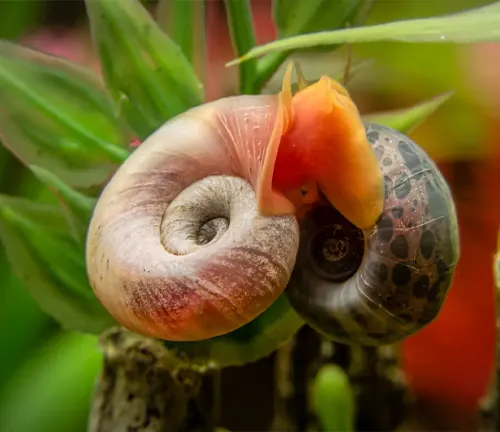

Egg Deposition and Hatching
Ramshorn Snails lay their eggs in gelatinous clusters on hard surfaces within the aquarium, such as glass, rocks, or plant leaves. The egg clusters are translucent and spherical in shape, resembling tiny pearls. Each cluster may contain numerous eggs, depending on the size and reproductive capacity of the female snail. After being deposited, the eggs undergo a period of incubation, which typically lasts a few days to a week, depending on environmental conditions such as temperature and water quality. Once the eggs hatch, miniature versions of the adult snails emerge, ready to explore their new aquatic environment.
Benefits and Drawbacks in Aquariums
Ramshorn snails offer several benefits to aquariums, but they also come with certain drawbacks that need to be considered by hobbyists.
Algae Control
Ramshorn Snails are renowned for their ability to help control algae growth in aquariums. These snails are voracious consumers of various types of algae, including green algae, diatoms, and cyanobacteria. By grazing on algae-covered surfaces such as glass, rocks, and plant leaves, Ramshorn Snails effectively reduce algae levels, helping to maintain a clean and balanced aquatic environment. Their continuous feeding behavior helps prevent algae blooms and keeps the aquarium visually appealing. Additionally, Ramshorn Snails can reach areas that are difficult for other algae-eating organisms to access, making them valuable allies in the ongoing battle against unwanted algae growth.

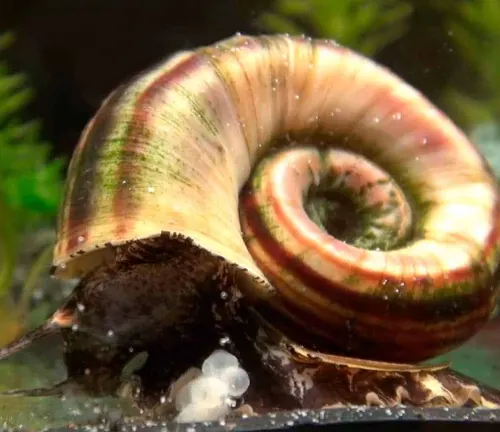
Reproduction Rate
Ramshorn Snails are known for their prolific reproduction rate, making them capable of quickly establishing large populations in aquariums. As hermaphrodites, Ramshorn Snails possess both male and female reproductive organs, allowing them to reproduce rapidly under favorable conditions. Female snails can lay clusters of eggs containing numerous embryos, with each egg cluster capable of hatching dozens of baby snails. With proper care and abundant food sources, Ramshorn Snails can breed continuously throughout the year, leading to exponential population growth if left unchecked. Therefore, aquarium hobbyists should be prepared to manage the reproduction rate of Ramshorn Snails to prevent overpopulation issues in their tanks.
Compatibility with Other Fish
Ramshorn Snails are generally peaceful creatures and can coexist with most freshwater fish species. They pose little to no threat to healthy fish and are unlikely to engage in aggressive behavior. However, caution should be exercised when keeping them with species known to prey on snails, such as certain cichlids and loaches. Additionally, some fish may exhibit curiosity towards Ramshorn Snails, occasionally nipping at their shells out of curiosity. Overall, Ramshorn Snails are compatible with a wide range of community fish species and can contribute positively to the overall balance of the aquarium ecosystem.

Common Health Issues
While ramshorn snails are relatively hardy creatures, they can still experience health problems in certain conditions.
Overpopulation Concerns
One of the primary concerns associated with Ramshorn Snails is their rapid reproduction rate, which can lead to overpopulation issues in aquariums. Without proper management, populations of Ramshorn Snails can quickly explode, resulting in overcrowding, competition for resources, and compromised water quality. To prevent overpopulation, aquarium hobbyists should actively monitor and control the number of snails in their tanks through methods such as natural predation, manual removal, or population control measures.
Nutritional Deficiencies
Ramshorn Snails require a balanced diet to thrive and may experience nutritional deficiencies if their dietary needs are not met. Inadequate nutrition can lead to health issues such as shell deformities or stunted growth. To ensure the well-being of Ramshorn Snails, hobbyists should provide a varied diet that includes algae wafers, blanched vegetables, and small amounts of fish food. Additionally, supplementing their diet with calcium-rich foods or supplements can help promote healthy shell growth and overall vitality.
Controlling Population Growth
Managing the population growth of ramshorn snails is essential for maintaining a balanced aquarium ecosystem.
Natural Predators
Introducing natural predators such as assaSeveral natural predators prey on Ramshorn Snails in the wild and can help control their population in aquariums. Common natural predators of Ramshorn Snails include assassin snails, certain species of fish such as loaches and pufferfish, and some aquatic insects like predaceous diving beetles. Introducing these natural predators into the aquarium can help manage the population of Ramshorn Snails and prevent overpopulation issues.sin snails or certain fish species can help control the population of ramshorn snails in an aquarium.
Manual Removal
Manual removal is a simple yet effective method for controlling the population of Ramshorn Snails in aquariums. Hobbyists can physically remove excess snails from the tank using a small net or tweezers, especially during routine maintenance tasks such as water changes or tank cleaning. Regularly removing snails by hand can help prevent overcrowding and maintain a balanced population of snails in the aquarium.
Myths and Misconceptions
There are several myths and misconceptions surrounding Ramshorn Snails, often perpetuated by misinformation or lack of understanding. One common myth is that Ramshorn Snails are harmful to aquarium plants, but in reality, they typically only consume decaying plant matter and are not significant plant predators. Another misconception is that all Ramshorn Snails have a rapid reproduction rate, but certain species and individual snails may breed more slowly under certain conditions. By dispelling these myths and educating hobbyists about the true characteristics of Ramshorn Snails, aquarium enthusiasts can make informed decisions about their care and management.
Environmental Impact
While Ramshorn Snails can be beneficial in aquariums, they can pose a risk to natural ecosystems if released into the wild. Hobbyists should never release aquarium snails into natural water bodies, as they have the potential to become invasive and disrupt native aquatic ecosystems. Additionally, Ramshorn Snails may compete with native species for food and resources, potentially causing harm to indigenous aquatic plants and animals. Therefore, responsible aquarium management practices, including proper containment and disposal of unwanted snails, are essential to prevent environmental impacts.
Different Species
Planorbarius corneus
Also known as the Common Ramshorn Snail, this species is widespread across Europe and North America. It has a relatively large shell and can vary in color from light brown to dark red.
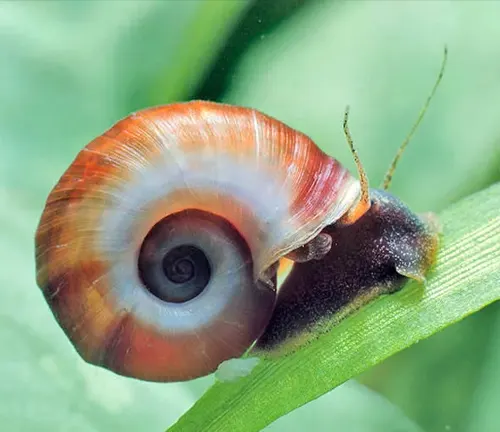
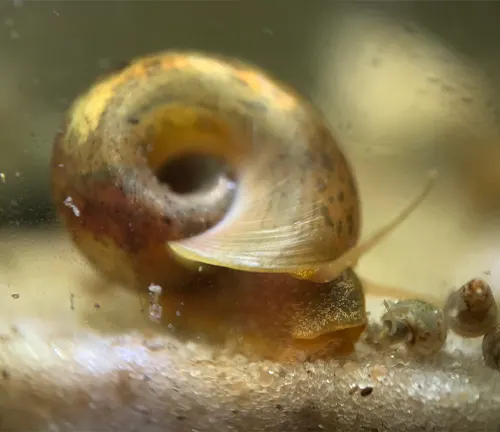
Planorbella duryi
Native to North America, the Dusky Ramshorn Snail has a small, flattened shell with a dark brown or black coloration.
Gyraulus acronicus
Found in various parts of Europe, this species of Ramshorn Snail has a small, disc-shaped shell with a smooth surface and a light brown or greenish color.

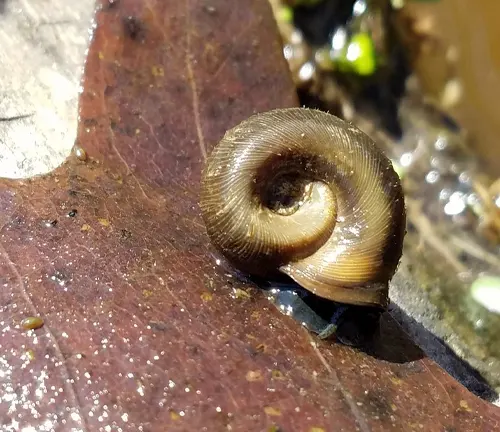
Helisoma anceps
Commonly known as the Marsh Ramshorn Snail, this species is native to North America. It has a relatively large shell with a pointed apex and typically exhibits a brownish coloration.
Ferrissia rivularis
Also called the Phantom Ramshorn Snail, this species is native to North America. It has a transparent, almost colorless shell, giving it a ghostly appearance.

Frequently Asked Questions (FAQs)
- Are Ramshorn Snails harmful to aquarium plants?
- Ramshorn Snails may nibble on tender aquarium plants, but they are generally not considered harmful unless present in large numbers.
- How do Ramshorn Snails reproduce?
- Ramshorn Snails are hermaphroditic, meaning they possess both male and female reproductive organs. They reproduce prolifically, with females capable of laying clusters of eggs on hard surfaces such as aquarium glass or plant leaves.
- How can I control the population of Ramshorn Snails in my aquarium?
- There are several methods for controlling the population of Ramshorn Snails, including introducing natural predators such as assassin snails or manually removing excess snails by hand.
- What do Ramshorn Snails eat?
- Ramshorn Snails are omnivorous scavengers, feeding on a diet of algae, decaying plant matter, and leftover fish food. They play a crucial role in aquarium ecosystems by helping to clean up organic debris and algae growth.
- Are Ramshorn Snails compatible with other fish species?
- Ramshorn Snails are generally peaceful creatures and can coexist with most freshwater fish species. However, caution should be exercised when keeping them with species known to prey on snails, such as certain cichlids and loaches.
- Do Ramshorn Snails require special care in aquariums?
- Ramshorn Snails are relatively low-maintenance creatures and do not require special care. However, maintaining stable water parameters and providing a balanced diet are essential for their well-being.
- How fast do Ramshorn Snails reproduce?
- Ramshorn Snails have a rapid reproduction rate, with females capable of laying hundreds of eggs at a time. Under ideal conditions, their population can increase exponentially.
- Can Ramshorn Snails survive in cold water?
- Ramshorn Snails are generally adaptable to a range of temperatures but prefer warmer water conditions. They may become sluggish or dormant in colder temperatures but can survive if the water does not freeze completely.
- Are Ramshorn Snails prone to any health issues?
- While Ramshorn Snails are relatively hardy, they can experience health problems such as shell deformities or nutritional deficiencies if not provided with a balanced diet and proper care.
- Can Ramshorn Snails be kept in outdoor ponds?
- Yes, Ramshorn Snails can thrive in outdoor ponds, provided the conditions are suitable. They can help control algae growth and contribute to the overall balance of the pond ecosystem.
- Do Ramshorn Snails require calcium supplements for shell health?
- Some hobbyists recommend providing calcium supplements such as cuttlebone or calcium-rich foods to ensure proper shell development in Ramshorn Snails, especially in tanks with soft water. However, in tanks with adequate mineral content, additional supplementation may not be necessary.


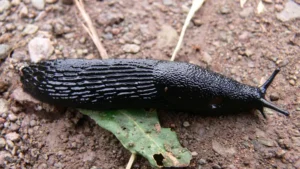




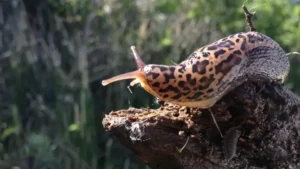
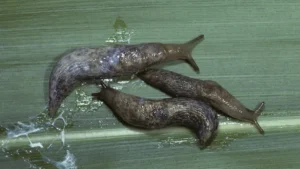
Leave your comment